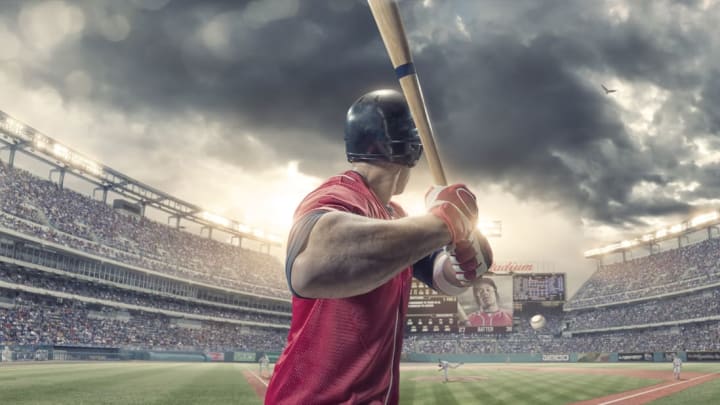7 Famous Baseball Pitches (and some physics behind them)

If you watch the playoffs from home, or listen in on the radio, you'll hear a lot of talk about what kind of pitch was just thrown, will be thrown, should be thrown, might be thrown, or, perhaps, shouldn't have been thrown. Cutters, sliders, sinkers—what are they exactly and what's the difference between them? Here's a little primer on six of the most popular pitches out there and a bit of the physics behind them:
1. Fastball - This is the basic, most important pitch in baseball. The first two fingers rest just on (or inside) the seams and the pitcher releases the pitch with the palm pretty much facing the batter, producing maximum velocity. How fast are we talking? Generally in the 90-95 mph range, though some pitchers have been known to hurl over 100 mph. Technically, what you see in the photo is called a two-seam fastball and produces a sidespin that causes the ball to cut in as it approaches the batter. There are other varieties, like the 4-seam fastball, which is thrown by holding the ball with the seams horizontal, rather than vertical. This produces backspin, which creates high pressure under the ball and low pressure on top resulting in the illusion of the ball rising (actually the ball isn't rising, just falling more slowly than it would normally). There's also a split-finger fastball where the first two fingers split, or straddle the seams, which causes the ball to drop a little as it approaches the plate. Despite the movement, the basic idea of a fastball is to overpower the batter, so he swings late and misses.
2. Sinker - If you've ever played wiffleball, you know the ball rises, falls, and curves in and away from a batter depending on where you position the air holes in the ball. Likewise, in baseball, a pitcher can create movement and variation in speed depending on how he releases the ball, or how he spins the ball. Off-speed pitches, like the sinker, are pitches that are released with the palm of the hand facing away from the pitcher. This causes the ball to sink as it approaches the batter. The idea here is to either get him to swing over the ball and miss, or, if he connects with the pitch, to produce a ground ball, rather than a line drive.
3. Changeup - A changeup is like a sinker, in that it's an off-speed pitch, only the palm is turned even further out. All off-speed pitches are similar in that they're thrown with less velocity than the fastball. But the batter doesn't know when one is coming because a good pitcher is able to use the same arm speed as he does for the fastball. So how does he throw it with less velocity? Simple: by pressing the baseball deep into his palm. Less finger contact means less torque and less velocity. So, if a batter is expecting a fastball, slowing down, or "changing up" the speed to, say, 87 mph can trip him up and he'll swing ahead of the ball. Great pitchers can build an entire career on the changeup because they're able to slow it down all the way to around 80 mph. If they can throw a fastball around 95 mph, that's a whopping 15 mph slower and really confuses the batter.
4. Screwball - This is another off-speed pitch that not only sinks, but moves from the pitcher's left side to the right as it approaches the batter. The palm is again pronated away from the pitcher, even further than the sinker and changeup. As the pitcher releases the ball, he twists the ball like a corkscrew. A left-handed batter will see the ball break away from him and a right-handed batter will experience the opposite, as the ball breaks in on him (the reverse is true if the pitcher is left-handed, of course)
5. Cutter - Turning the palm in the opposite direction produces a series of pitches known as breaking pitches. The further the palm is rotated toward the pitcher, the more movement (in most cases, but not all). The first stop over from the fastball is the cutter, which is like a fastball, only it breaks in ever so slightly and is generally thrown a few mphs slower than a fastball.
6. Slider - Basically the same thing as a cutter, a slider is thrown with less velocity than the former and the palm is rotated further toward the pitcher. The slower speed means there's more time for the ball to move, or slide, from one side of the plate to the other.
7. Curveball - A good curveball can be devastating, and also fun to watch. These are the pitches that appear to arc up toward the batter's chest (or even head) before dropping into the strike zone like a bomb as they reach the plate. Of course, not every successful curveball pitcher throws the large arc variety and they need not be so dramatic. Even a small arc keeps the hitter off balance. So how is the amazing trajectory accomplished? The pitcher turns his palm in so far that his hand looks like the letter "C." He then flicks his wrist as he releases the ball (the opposite direction from the screwball) creating topspin. The more topspin, the greater the air pressure difference between the top and bottom of the ball, and the greater the break.